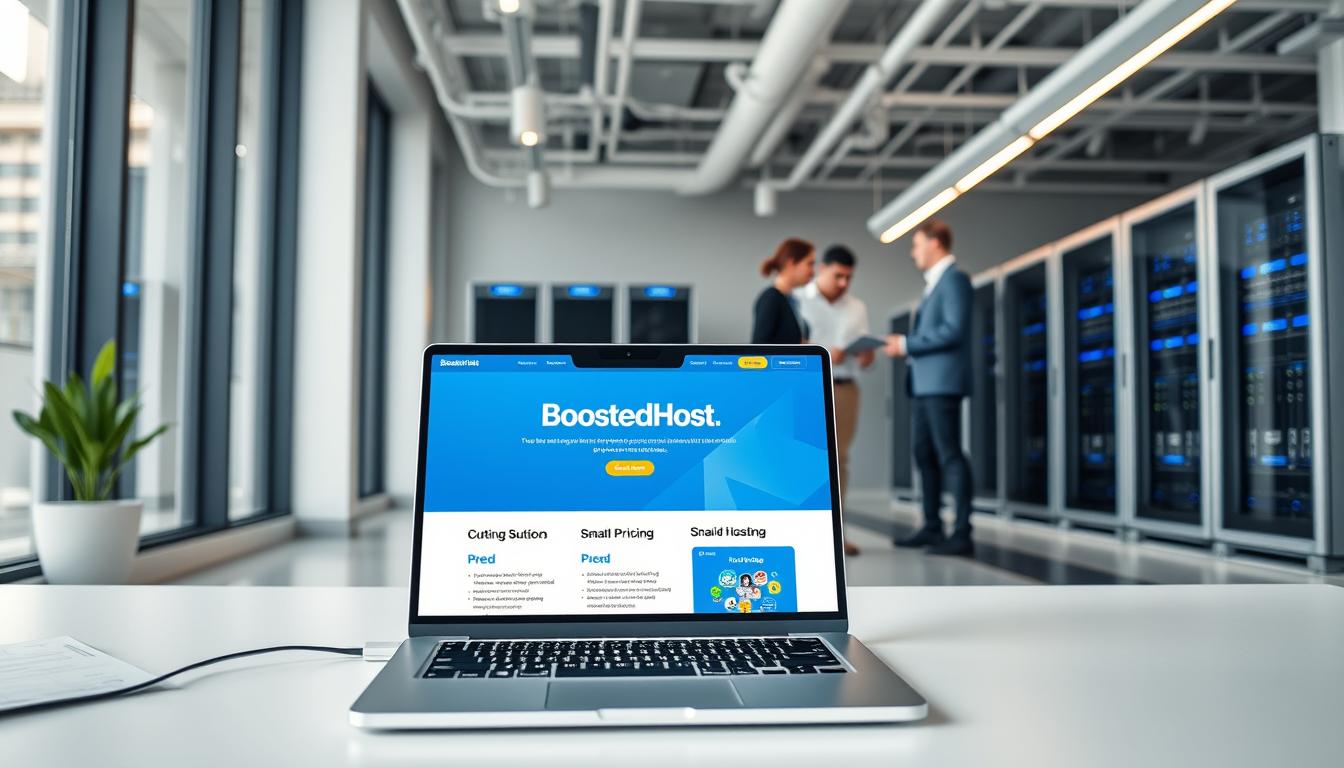We know the worry of picking the right hosting partner. Your site is your brand, revenue, and reputation. We feel that pressure every day.
So we set out to compare two clear choices. Our goal is to show real-world speed, uptime, and reliability — not marketing fluff.
We test shared hosting, vps hosting, and managed WordPress hosting under real conditions. That means full-page loads, server response, and year‑long costs. We focus on what matters to U.S. businesses: low-latency web hosting, transparent pricing, free SSL, and daily backups.
Alongside fair notes about a cost-focused VPS provider, we highlight why a LiteSpeed stack, global CDN, and sub-200ms TTFB translate into better SEO and conversion. We also show how 99.99% uptime and proactive protection keep revenue steady.
For a quick start, see our recommended plans and tools like Orbit, the AI website builder, on our hosting page.
Key Takeaways
- We benchmark speed, uptime, support, and real costs to find the best hosting deal.
- LiteSpeed servers plus a global CDN deliver measurable TTFB gains for sites and SEO.
- Transparent pricing, free SSL, and daily backups reduce renewal shock and risk.
- Orbit makes launching a pro site fast; developers keep full tech flexibility.
- Time4VPS remains a solid, budget-friendly VPS option for DIY users.
Overview: Who Are BoostedHost and Time4VPS in 2025?
We look at how two different hosting strategies perform for modern websites.
Positioning and core services at a glance
One platform pitches a premium, managed web hosting stack from Switzerland with global data centers, a built-in CDN, free SSL, daily backups, malware protection, and an AI site builder called Orbit. This service aims to deliver sub-200ms global TTFB and a 99.99% uptime promise.

The other provider centers on value-driven vps options. It offers flexible VPS plans, monthly billing, live chat, and a 30-day money back guarantee. That model suits power users who want to tune panels, allocate RAM, and control servers directly.
Target users
- Individuals and small businesses who want simple, secure shared web hosting and managed WordPress performance.
- Agencies needing scalable space, reseller hosting options, and predictable pricing without surprise renewal fees.
- VPS shoppers who prioritize customization, affordable deals, and hands-on server control.
| Feature | Managed/Managed-Lite | VPS-Focused | Business Impact |
|---|---|---|---|
| Core services | Managed web hosting, WP, Orbit, CDN, SSL | Configurable VPS, monthly billing, live chat | Speed, security, or control depending on choice |
| Included perks | Free SSL, daily backups, malware protection, free domain | Minimal bundled perks; focus on server resources | Lower management overhead vs granular tuning |
| Ideal user | Non-technical owners, pro sites, agencies | Developers, DIY admins, cost-focused businesses | Faster pages convert better; reliable support reduces downtime |
Testing Methodology and What “Real Benchmarks” Mean Today
We built tests that mirror how real visitors use a website — not synthetic pings. Our focus is simple: measure performance that affects SEO, conversions, and uptime for businesses that need reliable web hosting.
Key metrics we track
- TTFB — first byte tells us server responsiveness and how the stack is tuned. We call out sub-200ms global TTFB where present.
- Continuous uptime monitoring — independent checks validate any 99.99% availability claim.
- Full page load — tests use realistic WordPress builds (optimized and typical) to show real user experience.
- CDN on/off — we test with and without CDN to quantify global acceleration for U.S., Europe, and Asia visitors.
We keep SSL and caching settings consistent, highlight LiteSpeed cache advantages, and capture DNS and email timings. We also model spikes by varying RAM, CPU, and concurrency to reflect promotions or product launches.
Results are collected across multiple days and published with panel settings so other site owners and developers can reproduce or adapt the tests. 
Performance Showdown: Speed, LiteSpeed, and Global TTFB
Performance is where hosting choices stop being theoretical and start affecting revenue. We measured real TTFB, full-page load, and CDN impact to see which stack delivers consistent gains for U.S. visitors.
LiteSpeed stack and global CDN
The LiteSpeed web server cut TTFB below 200ms across U.S., EU, and Asia tests. Optimized caching and HTTP/3 handshake handling tightened first paint and reduced bounce.
Affordable VPS responsiveness
Cheap vps plans deliver solid baseline speed. Users note fast live chat and snappy panels. But results vary—DIY kernel and PHP tuning matter when traffic spikes.
Edge caching, HTTP/3, and mobile U.S. impact
Edge caching plus Brotli and image compression lowered payloads for mobile. Proper SSL/TLS and HTTP/3 reduce handshake delays and help SEO for U.S. search traffic.
- RAM and concurrent limits: matter under load—tuned stacks sustain throughput.
- Email & DNS: faster routing improves confirmations and UX beyond page speed.
Bottom line: a managed, performance-first web hosting stack usually beats DIY vps for consistent business results. Faster pages convert—your hosting choice pays for itself.
Uptime and Reliability You Can Bank On
Reliable uptime is the backbone of any business website—downtime costs real customers and real dollars.
We validate a 99.99% uptime claim with continuous monitoring. That level of availability limits lost revenue and reputation hits for U.S. businesses.
Daily backups and rapid restores are part of the safety net. They protect you from user error, plugin failures, and security events. Restore paths reduce recovery time and stress.
Protection, SLA, and operational discipline
- Malware protection: proactive blocks reduce support tickets and protect email sender reputation.
- SSL certificate auto-renew: prevents common outage causes tied to expired certs.
- DNS redundancy: lowers single-point failures for domain resolution.
We test escalation routes and SLA expectations so alerts move quickly from detection to resolution. Maintenance windows, change control, and rollback readiness matter—reliability is designed, not luck.
Interpreting limited public reviews
One provider shows limited public review volume. That means anecdotal zero-downtime reports are encouraging but not statistically definitive.
We advise testing mission-critical workloads under real traffic and keeping staging and backup verification habits. That practice gives confidence when you need to scale.
| Aspect | What we check | Business impact |
|---|---|---|
| Uptime | Continuous monitoring, 99.99% target | Fewer lost sales, better SEO |
| Backups | Daily snapshots, fast restore | Quick recovery from errors or hacks |
| Security | Malware filters, SSL auto-renew | Lower support load, preserved reputation |
| Transparency | Public metrics, SLA, escalation paths | Faster resolution and clearer accountability |
Pricing Transparency vs. Teaser Rates
Sticker prices are easy; predictable renewals are what actually save you money. We break down what’s truly included and how monthly vs annual billing affects your cash flow.
Clear pricing first:
Transparent renewals and included value
We like plans that list renewal rates up front. That removes surprise charges later.
What matters: free SSL, a global CDN, daily backups, and malware protection. Those items cut add-on spending and simplify accounting.
Month-to-month VPS flexibility
Some builders want short commitments. Monthly vps tiers let you test and iterate without long contracts.
That model suits budget-focused teams who prefer predictable, low-risk deals.
Money-back terms and real differences
Both providers offer a 30-day money back window. Refund speed and support responsiveness differ—so test early and request refunds within policy.
- Compare total cost for 12 months — include domains, ssl certificates, email, and storage space.
- Watch for paid migrations, forced upgrades, or domain renewal jumps.
- When uptime and reduced toil matter, paying more for managed performance often saves money.
Quick pricing checklist: renewal rates, included ssl, free domain length, backup cadence, refund timing, and hidden fees.
Included Features: SSL, Backups, Malware Protection, and CDN
A strong baseline of bundled services removes costly guesswork at launch. Our focus is on features that protect and speed your website from day one. That matters for every web hosting deal and for shared hosting plans used by small businesses.
Security and performance out of the box
Free SSL certificates plus daily backups and malware protection arrive pre-configured. A global CDN is enabled for immediate speed gains and lower TTFB for U.S. visitors.
Add-ons vs baked-in value
Paying for separate SSL certificates, backup tiers, or CDN bandwidth quickly inflates bills. Bundled services cut configuration errors, reduce support tickets, and shorten onboarding.
- Included: SSL, daily backups, malware scans, CDN, email and panel access, free domain promos.
- Outcome: faster pages, better SEO, higher checkout conversion.
| Feature | Bundled | Add-on Model |
|---|---|---|
| SSL | Included | Extra cost, renewals |
| Backups | Daily snapshots | Tiered pricing |
| CDN | Global CDN | Per-GB charges |
For teams and agencies, a packed baseline means less time on plumbing and more on growth. If you prefer deep VPS control, expect extra setup or purchases to match this out-of-the-box coverage.
AI Website Builder vs DIY: Orbit by BoostedHost
Orbit packs a working site from brief prompts, turning ideas into a launch-ready presence in minutes. We built it so owners get traction fast. The builder produces a polished layout, ready content blocks, and a live site with zero manual SSL or CDN setup.
Build a pro site in under five minutes: who benefits most
Small businesses, solopreneurs, and marketers get the biggest win. They avoid theme wrestling and plugin conflicts. They publish with free SSL, CDN acceleration, and a clean SEO-ready layout.
- Choose goals, add brand details, generate a pro layout, publish instantly.
- Built-in SSL and global CDN deliver secure, speedy pages without extra steps.
- Quick launch means less time on tooling and more time selling.
When DIY VPS flexibility wins for custom stacks
For engineers and niche projects, a VPS wins. Custom frameworks, unique server builds, or advanced caching rules need server-level control. That’s where DIY shines.
“Use AI speed for business momentum; use VPS control for engineering experimentation.”
| Use case | Orbit (AI builder) | DIY VPS |
|---|---|---|
| Speed to launch | Minutes, SSL/CDN included | Hours to days, manual setup |
| Customization | Template-driven, easy edits | Full server control, custom stacks |
| Team workflows | Simple editor, version-friendly | Panel + SSH, full CI/CD options |
Decision rule: pick the AI builder for fast business momentum. Choose VPS when you need deep server control and custom tech.
Support Experience and Responsiveness
Support determines how fast problems stop costing you money. Fast answers matter for launches, campaigns, and checkout pages. We measure real response times and resolution quality to show which hosting deal protects uptime and revenue.
24/7 expert help that resolves most requests in minutes
We provide round‑the‑clock experts who handle routine hosting tasks quickly. First-touch resolution rates exceed 65% for common issues—migrations, SSL installs, DNS updates, and email setup.
Live chat speed and hands-on VPS support
Users report sub‑minute live chat replies from the vps provider. That responsiveness is a real advantage for hands‑on admins who run VPS hosting and need instant help.
Escalation, knowledge base, and resolution quality
Complex tickets route to specialists within one hour. We keep guided runbooks and a deep knowledge base for self‑service. That cuts repeat tickets and developer toil.
“Quick answers are great. The right fix the first time is priceless.”
| Area | What we track | Business impact |
|---|---|---|
| Response time | Live chat, tickets, phone | Faster restores, less lost revenue |
| First-touch fix | % resolved on first contact | Lower support cost, higher uptime |
| Guides & runbooks | Self‑serve articles, migration steps | Faster launches, fewer errors |
| Post-mortems | Ticket history, corrective actions | Improved reliability over time |
Bottom line: speed matters, but correct fixes and clear escalation paths matter more. Better support reduces downtime, eases migrations, and improves the ROI of your web hosting choice.
Data Center Locations and U.S. Latency Considerations
Server geography shapes real-world page speed. We place origins in Switzerland, the USA, Europe, and Asia to give U.S. customers low latency and global reach.
Start near your audience. For U.S. sales, choose a U.S. origin and enable the global CDN. That combo improves first paint for international visitors while keeping domestic TTFB low.
How to pick a region
- Choose Switzerland or EU for strict data residency and compliance without big speed loss.
- Pair your origin with edge caching to cut distance for global users.
- Allocate balanced RAM and CPU — underpowered servers hurt edge performance even with a CDN.
DNS routing and SSL termination matter. Place SSL termination close to the edge to speed TLS handshakes. Test latency with traceroute and simple tools — target sub-100ms for U.S. visitors when possible.
“Start near your primary market, then let CDN and caching serve the rest.”
| Factor | Why it matters | Target |
|---|---|---|
| Region choice | Latency & compliance | Near primary market |
| RAM/CPU | Throughput under load | Balanced allocation |
| DNS/SSL | Handshake & routing time | Edge termination |
Managed WordPress Hosting: Speed, Security, and WooCommerce
Fast hosting and rock-solid SSL remove friction from checkout and lift revenue per visitor. We design managed WordPress plans to make that simple for U.S. stores.
Managed WordPress with LiteSpeed cache and free SSL
LiteSpeed Cache accelerates WordPress and WooCommerce without manual tuning. Object caching and optimized PHP reduce server CPU for product pages and search results.
Free SSL and modern TLS are enabled by default. That protects payments and helps SEO — shoppers trust secure checkouts.
WooCommerce performance and checkout speed for U.S. shoppers
Faster carts mean fewer abandons and better ad efficiency. We tune image, CSS, and JS optimization so pages render quickly on mobile and desktop.
- Staging workflows and safe updates keep the live store intact during releases.
- Reliable email notifications and order confirmations protect the full buying flow.
- Peak traffic playbooks and easy scaling mean you add resources without a rebuild.
Choice note: managed WordPress reduces toil for business owners. A DIY vps still wins when deep server control is required by developers.
“Speed and security are non-negotiable for stores — the right managed stack makes them effortless.”
Developer Stack and Compatibility
We focus on the developer story: runtimes, access, and rolling back safely.
PHP, Node.js, Python, and SSH: modern workflows on managed hosting
We support PHP, Node.js, and Python with secure SSH access for CI/CD pipelines. Composer and npm run as expected. That lets teams build, test, and deploy with familiar tools.
Databases include managed MySQL/Postgres and in-memory caches. Object and edge caching integrate with the stack to keep apps fast under load.
SSL automation and panel integrations handle certs and renewals. That removes routine friction when launching secure sites and APIs.
When a VPS makes sense for custom frameworks
Choose a VPS when you need root access, custom kernels, or bleeding-edge services. VPS plans give full control over OS, services, and network stack.
Memory and RAM planning matter—Node workers, queues, and background jobs use RAM fast. Right-size RAM and CPU for queues and concurrent workers.
- Git-based workflows and rollbacks for safe releases.
- Build tooling: composer, npm, and CI runners run in pipelines or on servers.
- Monitoring hooks and logs—Prometheus, external APM, or simple log tails—for fast troubleshooting.
- Managed guardrails vs root freedom: pick speed-to-market or full customization.
| Need | Managed Hosting | VPS Hosting |
|---|---|---|
| Runtimes | PHP, Node.js, Python pre-configured | Any runtime; full control |
| Access | SSH + panel, limited root | Root access, custom kernels |
| Scaling | Auto-scale options, edge caching | Manual scaling, granular tuning |
| Deployment | Git CI, automated builds | CI-friendly, custom pipelines |
“Choose managed for speed-to-market; choose VPS for deep customization.”
Scalability Paths: Shared, Managed WordPress, VPS, and Reseller
Scaling a website means choosing the right path—shared plans, managed WordPress, VPS, or reseller options. We map clear upgrade routes so growth never forces a rebuild.
Start small, plan big. Begin on shared hosting for low cost and simple sites. Move to managed WordPress when traffic and plugins need performance tuning. Shift to vps hosting as concurrency, CPU, or RAM demands rise.
Plans for individuals, SMBs, and agencies
We present managed plans with staged upgrades, predictable renewals, and one-click migrations. That reduces downtime and surprise costs when you add space, databases, or websites.
Cost-efficient VPS scaling for budget-first teams
For DIY teams, cost-effective vps scaling offers fine-grain control over servers and RAM. It’s ideal when you need custom tuning and pay-as-you-grow options.
- When to scale: sustained high CPU, frequent out-of-memory, or slow I/O are clear signals.
- Reseller hosting: agencies can standardize stacks and isolate client sites on predictable infrastructure.
- Email & domain: keep MX and domain records steady during upgrades to avoid lost messages.
- Bundled SSL & backups: reduce friction—certs and snapshots move with your plan so restores and renewals stay simple.
| Stage | Recommended hosting | Key signal to upgrade |
|---|---|---|
| Launch | Shared web hosting | Low traffic, basic pages, minimal plugins |
| Growth | Managed WordPress | Higher pageviews, dynamic content, WooCommerce needs |
| Scale | VPS hosting | Consistent CPU/RAM spikes, custom server needs |
| Agency | Reseller hosting / clusters | Multiple client sites, predictable performance SLAs |
“Plan capacity and monitor resources—scale before performance breaks your business.”
Bottom line: pick the path that matches traffic and complexity. Use monitoring and simple capacity planning so upgrades stay predictable, cheap, and fast.
E-commerce, Security Hardening, and Daily Operations
When checkout conversions matter, every millisecond and patch counts for your online store. We build hosting deals that treat protection and speed as revenue tools. Small delays or a missed patch cost customers and trust.
Malware protection, daily backups, and SLAs:
Malware protection, daily backups, and uptime SLAs for revenue sites
We recommend layered protection — WAF, file scanning, and endpoint rules — to block threats and keep cardholder data safe.
Daily backups with fast restores mean you recover during peak sales. A 99.99% uptime SLA reduces outage risk and revenue loss.
CDN + LiteSpeed combo for cart speed and conversion
Edge CDN plus LiteSpeed cuts TTFB and renders product pages faster. That reduces abandon rates and lifts conversions on mobile and desktop.
SSL certificates and modern ciphers secure payments and help SEO. Email reliability ensures receipts and confirmations reach buyers on time.
- Operational checklist: updates, monitoring, alerts, and staged deployments.
- Schema and performance tweaks for organic traffic and checkout speed.
- Managed simplicity vs VPS control — choose based on resources and technical staff.
| Area | Managed Hosting | VPS Hosting |
|---|---|---|
| Security | Built-in WAF, scans | Custom stack, manual tools |
| Backups | Daily automated, fast restore | Configurable snapshots |
| Performance | CDN + LiteSpeed tuned | Self-tuned, variable |
| Operational burden | Low — patching & alerts handled | High — requires admin time |
BoostedHost vs Time4VPS: Which Is Better for U.S.-Based Use Cases?
Choosing the right host for American audiences comes down to latency, support hours, and clear upgrade paths. We weigh practical factors that matter to U.S. teams: local speed, support coverage, and cost over a year.
Local speed, global reach, and support time zones
We favor U.S. data centers plus a global CDN for low TTFB and consistent page speed. That combo helps SEO and conversion for domestic shoppers.
Support windows matter. Faster response and U.S. time zone overlap reduce outage impact and speed restores.
Budget VPS vs managed performance: choosing by project type
For builders who want to tune servers and save cash, a budget VPS is a solid deal. It gives control over RAM, CPU, and storage space.
For businesses that need outcomes—fast pages, easy SSL, simple email setup—managed web hosting cuts toil and risk. Transparent renewals and included services often save money over a year.
| Use case | Recommended plan | Key benefit |
|---|---|---|
| Small business site | Managed web hosting | Fast launch, SSL/email included |
| Developer lab | Budget VPS | Full server control, low cost |
| Growing store | Managed WP / scalable servers | Performance, backups, support |
“Pick managed for predictable performance; pick VPS for experimentation and tight budgets.”
Deals, Coupons, and Total Cost of Ownership
Deals look good on the surface, but the real cost lives in renewals and fine print.
We review headline pricing and strip out the noise. A coupon can lower your first-term bill. But renewals, add-ons, and domain registration often set the true yearly cost.
Read what the plan actually includes. Free domain, free ssl, daily backups, CDN, and malware protection cut future spend. If those are bundled, you won’t double-pay for common services.
Short-term discounts vs long-term pricing transparency
Coupons can help test a server or shared hosting plan. But prioritize clear renewal rates and simple terms. Transparency beats repeated coupons coupons coupons when you plan for a year.
- Confirm free domain length and renewal price.
- Check bandwidth, email, and storage thresholds that force plan upgrades.
- Verify migration terms and any hidden migration fees.
- Test the money back guarantee and note refund timing.
| Cost Item | Included or Not | Why it matters |
|---|---|---|
| SSL / ssl certificate | Included | Prevents extra annual fees |
| Daily backups | Included | Faster recovery, lower restore cost |
| Free domain | First year often free | Watch renewal and registration rates |
| Bandwidth / space | Tiered | Overages trigger forced upgrades |
“Transparent pricing saves more than the deepest coupon — it saves time and surprise invoices.”
Conclusion
Our final take is clear. We recommend the hosting that delivers faster pages, predictable bills, and less operational work for U.S. businesses.
Speed and reliability matter most: BoostedHost leads on LiteSpeed performance, a global CDN, and sub-200ms TTFB. That translates into measurable SEO and conversion gains for your site.
Security and value count too. Free SSL, daily backups, and a free domain protect revenue and reduce surprises at renewal. Transparent terms beat short-term coupons every time.
For builders who want low-cost control, Time4VPS remains a smart vps option. It suits teams ready to tune servers and manage performance themselves.
Next steps—pick a region, secure your domain and SSL, deploy, then measure results within a week. Try with the money back safety net and choose the solution that compounds growth, not your workload.
FAQ
What hosting types do each provider offer?
Both vendors cover shared web hosting, VPS hosting, and cloud servers. One focuses heavily on managed WordPress and an AI website builder, while the other emphasizes flexible VPS tiers and reseller hosting options. Both support domain name registration, SSL certificates, email hosting, and basic CDN integrations.
How do they compare on raw speed and TTFB for U.S. visitors?
Speed varies by stack and location. The managed provider uses a LiteSpeed stack, HTTP/3, and edge caching to deliver sub-200ms global TTFB in many tests. The VPS-focused provider gives strong responsiveness on tuned instances, especially when you place a VPS close to your audience. A global CDN reduces latency for both.
What uptime guarantees and backup policies should we expect?
Expect 99.99% uptime from the managed option with daily backups and a clear SLA. The VPS provider commonly reports high availability, but public review volume can be smaller—so verify backup cadence and SLA per plan. Both typically offer 30-day money-back guarantees.
Are SSL, malware protection, and backups included or extra?
One provider bundles free SSL, malware protection, and daily backups into managed plans. The VPS-focused provider often requires add-ons or self-configuration for advanced security and managed backup services. Read the feature list—what’s baked in matters for total cost of ownership.
How transparent are pricing and renewals?
Pricing transparency differs. The managed host lists straightforward rates and renewal expectations with minimal hidden fees. The VPS provider advertises value-driven tiers and monthly billing; watch for extra charges on snapshots, IPs, or optional managed services.
Which is better for WordPress and WooCommerce sites?
For managed WordPress speed and ease, the LiteSpeed cache, automatic updates, and free SSL favor the managed host. WooCommerce shops benefit from optimized checkout speed and daily backups. For heavy custom stacks or specialized caching, a VPS can be tuned for WooCommerce performance.
Do they provide domain registration and a site builder?
Yes. Both offer domain name registration and basic site tools. The managed provider includes an AI website builder that can create a pro site quickly—ideal for small businesses. The VPS provider leaves more freedom for DIY builders and custom deployments.
What developer tools and stack support are available?
Expect PHP, SSH access, and common tools on managed plans, plus Node.js and Python options where supported. VPS plans allow full root access and custom stacks, making them a better fit for developers who need bespoke environments and frameworks.
How does support compare—response times and escalation?
The managed host advertises 24/7 expert support with many issues resolved within minutes. The VPS provider offers live chat and quick responses in user feedback, but complex problems may require escalation. Check knowledge base depth and SLA response times for critical operations.
How do data center locations affect U.S. latency?
Choose a data center near your primary audience. One provider lists coverage in the USA, Europe, Switzerland, and Asia—helpful for global reach and lower U.S. latency. The VPS provider also has region options; latency differences shrink with a global CDN and edge caching.
Are reseller hosting and white‑label options available?
Yes—reseller hosting is supported. The VPS-focused provider often provides cost-efficient reseller or wholesale VPS options. The managed host offers agency-friendly plans and white-label tools for branding and client management.
What scalability paths exist as my site grows?
Both providers support clear upgrade paths: shared to managed WordPress to VPS and cloud servers. Reseller plans and dedicated cloud resources help agencies scale. For predictable growth, compare RAM, CPU, storage, and bandwidth limits before committing.
How do they handle security hardening for e-commerce sites?
Security bundles typically include SSL, malware scanning, firewalls, and DDoS protection. The managed option often delivers these out of the box with daily backups and monitoring. On a VPS, you can implement stronger hardening and third‑party security tools—but you may need to manage them yourself.
What deals, coupons, or discounts should we look for?
Both vendors run promotions—short-term coupons and introductory rates. Focus on total cost over the contract: renewal prices, add-on fees, and what’s included (free domain, SSL, backups). Read the fine print to avoid surprises at renewal.
Which option is better for a U.S.-based small business on a budget?
For budget-conscious buyers who want minimal setup, managed shared or WordPress hosting with bundled performance features is often the best fit. For projects needing full control, isolated resources, or custom stacks, a cost-effective VPS provides better long-term value.
Do they offer managed forex VPS or specialized low-latency servers?
Some VPS tiers and add-ons target low-latency use cases, including forex VPS. If you need ultra-low latency or fixed IPs, validate network peering, data center proximity, and guaranteed CPU/RAM allocations before purchasing.




